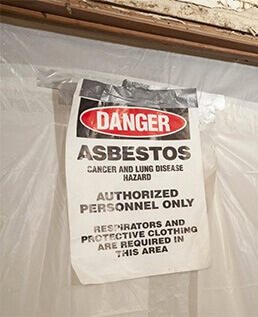The Impact of Mold on Lyme Disease
Posted in Mold Removal, on July 10, 2024
People living with Lyme disease have experienced heightened negative health effects in homes and buildings infested with mold. If you are seeking to understand the impact of mold on Lyme disease and how it will impact health, read on. If you have any issues related to mold, you can contact Canada's Restoration Services for expert mold removal in Toronto and attic mold removal.
If you are currently living with Lyme disease and are worried about mold exposure, take as many precautions as necessary until removal can be completed
Understanding Mold
.jpg) How Mold Can Affect Health
How Mold Can Affect Health
It's correct to say that mold is capable of having negative effects on health. Exposure may mean that one has to suffer a range of health complications related to the respiratory system, allergies, and general health issues. Furthermore, it's important to note that exposure to molds worsens existing health conditions linked to Lyme disease. In this respect, necessary steps to prevent and eliminate molds in indoor environments become very critical in ensuring healthy living and lifestyle.
Mold and Its Impact
Depending on the kind of mold, most especially Stachybotrys or black mold, can have various health effects. Some species of mold produce mycotoxins that can be more dangerous and potentially cause acute health problems. Thus, it is important to be aware of the possible health effects of getting exposed to various types of mold.
Common Sources of Mold Exposure
Mold is a fungus that likes to grow in damp areas, usually with poor air circulation. It is very common in basements, attics, and bathrooms. Mold prevention includes identifying sources of moisture in one's home and having them repaired to evade the growth of mold and possible sicknesses that may be linked. Regularly checking these areas for leaks or ventilation issues will help ensure a safe and healthy environment at home.
Understanding Lyme Disease
Overview of Lyme Disease and Its Symptoms
Lyme disease is a bacterial infection transmitted by the bite of an infected tick. Symptoms include fever, general exhaustion, headache, muscle ache, and joint soreness. It also gives a "bull's-eye" rash on the skin in some individuals. Infections are to be identified and treated in time to overcome serious symptoms like joint swelling, irregular heartbeats, and problems with the nervous system. Seek immediate medical attention if you have been exposed to a tick or if you experience any of the following symptoms.
How Lyme Disease is Transmitted
Lyme disease is an infection caused by the bacterium Borrelia burgdorferi and is spread through the bite of black-legged ticks infected with this pathogen. These ticks live in wooded, bushy areas but may be present in gardens or parks as well. The initial symptoms of the infection are fever, headache, general feeling of fatigue, and more importantly, a characteristic skin rash called erythema migrans. Failure to seek proper treatment may allow the infection to progress into more serious forms that attack the joints, heart, and even the nervous system. In relation, stay away from areas considered infested with ticks, use protective clothing, apply insect repellent, and conduct regular checks for ticks after every outdoor activity.
Impact of Lyme Disease on the Body
If not treated promptly, Lyme disease can lead to serious complications. These would include neurologic complications, meningitis, cognitive problems, and nerve damage alongside joint inflammation and swelling.
The Connection Between Mold and Lyme Disease
The Link Between Mold and Lyme Disease
The latest research claims that mold exposure might exacerbate symptoms for those suffering from Lyme disease.
This eventually leads to a higher susceptibility to Lyme disease, which is a big problem because its symptoms intensify. When exposed to mold, a body could become more prone to infectious diseases like Lyme disease because the immune system is compromised. This exposure also worsens the symptoms of Lyme disease and makes fighting the infection more challenging. Mold exposure should not be encouraged, especially in people with Lyme disease.
Mold Prevention
Strategies for Mold Exposure Prevention
To avoid any kind of mold exposure, fix moisture problems immediately. Fixes may include hidden leaks, water damage, or any other reason for moisture that can cause dampness. Ventilation can be enhanced by using exhaust fans and opening windows to reduce humidity. Other things that may help in avoiding potential mold growth are inspecting a property regularly for any signs of water damage, cleaning gutters, and repairing torn or worn-out spots on rooftops where leaks may occur.
How Addressing Mold Exposure Can Help in Managing Lyme Disease
The issue of mold exposure is highly relevant for individuals with Lyme disease. Exposure to mold can exacerbate symptoms and complicate the management of the disease. Additionally, mold spores can trigger an inflammatory response in the body, worsening pain, fatigue, and neurological symptoms in those with Lyme disease. Therefore, it's crucial to consider indoor air quality, address mold problems within living spaces, and minimize exposure to mold in order to improve physiological functioning and symptom management for individuals with Lyme disease.
Rid your Property of Mold with Canada's Restoration Services
Understanding the impact of mold is crucial for managing health issues related to Lyme disease. It's important to identify and address mold problems in your home to create a healthy living environment and potentially alleviate symptoms associated with Lyme disease. If you're in Toronto, you can contact Canada's Restoration Services for professional mold removal, including attic mold removal, to ensure a safe and healthy space for you and your family. Investing in mold removal costs in Toronto and the surrounding areas can preserve your health for a more comfortable and healthy path forward.







